In 1850, E. W. Quincy of Illinois patented an open-roll ear-snapping mechanism. A series of innovations led to corn heads for combines. Harvesting corn with corn pickers using open rolls on corn pickers after 1925 proved to be dangerous as farmers often needed to clear stalks from the rolls. In 1885, E. M. Aiken, Dawson, ND, patented shielded snapping rolls with flat plates above the rolls. C. K Shedd and E. V. Collins, Ames, IA, patented a more aggressive shielded snapping device in 1941 which was later used on sweet corn pickers.
1998

In 1892, John H. Froehlich, Froehlich, IA, Mounted A Gasoline Fueled Internal Combustion Engine On A Traction Geared Frame And Used It To Power A Threshing Machine. A Change In Power Source Had Begun On North American Farms. In 1892, The Case Co., Racine, Wi, Built An Experimental Gas Traction Engine. In 1898 A Patent Was Issued To The Van Duzen Co. Cincinnati, OH, For A Gasoline Traction Engine. Huber Mnfg., Marion, Oh, Bought This Patent In 1898 And Produced 30 Prototype Units. In 1902, Hart-Parr, Founded By Charles W. Hart And Charles H.
The first commercial circulating fluid bed reactor, PCLA #1 (Powdered Catalyst Louisiana), went on stream on May 25, 1942, in the Baton Rouge Refinery of the Standard Oil Company of New Jersey (now ExxonMobil Corporation). This first use of powdered catalysts in continuous operation allowed the efficient cracking of heavy gas oils to meet the growing demand for high-octane fuels. Today, fluid bed reactors are in use worldwide for the manufacture of fuels, chemical intermediates and plastics.
The plaque commemorating the development reads:
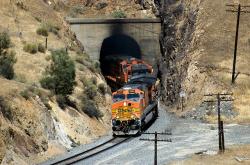
The Tehachapi Pass Railroad Line was cut through solid and decomposed granite by about 3,000 Chinese laborers using nothing more than picks, shovels, horse drawn carts, and blasting powder. This line, which rises from the San Joaquin Valley and through the Tehachapi Mountains, originally included 18 tunnels, ten bridges and several water towers to accommodate the steam locomotives. Completed in less than two years, it was part of the final line of the first railroad to connect San Francisco with Los Angeles.
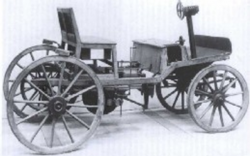
ViennaCountry: AustriaWebsite: http://www.asme.org/about-asme/history/landmarks/topics-m-z/road-and-off-road-transportation/-203-siegfried-marcus-car-%28ca--1875%29Creator: Marcus, Siegfried
Siegfried Marcus (1833-1898), a remarkable engineer and manufacturer, lived most of his life and died in Vienna, leaving his most important legacy — an experimental automobile resembling today's modern car and the oldest extant automobile known worldwide. Marcus' second car, built circa 1875 (a more specific date still being investigated by historians), is believed to be the first vehicle powered by a four-cycle engine and the first to use gasoline as a fuel, featuring the first carburetor for a gasoline engine and the first magneto ignition.
This is the oldest operating vessel with a diagonal, compound steam engine, with disc valve gear. Operating at a higher pressure than the oscillating-cylinder engines then used in lake steamers, this type of engine was more powerful and efficient, as well as smaller. The compound engine, built by Sulzer brothers of Winterthur, uses super-heated steam from the boilers in two stages-high and low pressure-before exhausting it into a condenser. The engine produces 650 horsepower, turning two paddle wheels.
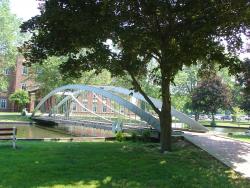
Designed, patented, and built by Thomas W.H. Moseley, this arched 96-foot span bridge preceded by years the standard use of wrought iron for bridges. For the first time in the United States, Moseley incorporated the use of riveted wrought-iron plates for the triangular-shaped top chord.
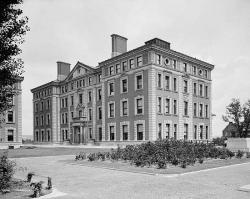
Havemeyer Hall was built between 1896 and 1898 under the leadership of Charles Frederick Chandler. It provided research and teaching facilities for faculty and students specializing in industrial, inorganic, organic, physical, and biological chemistry. Pioneering research done here led to the discovery of deuterium, for which Harold Clayton Urey received the Nobel Prize in 1934. Six others who did research here subsequently received the Nobel Prize, including Irving Langmuir, the first industrial chemist to be so honored, in 1932.
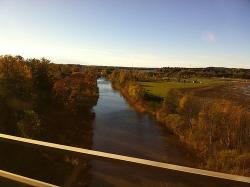
AleNGothenburgState: Västra Götaland CountyCountry: SwedenWebsite: http://www.asce.org/Project/Gota-Canal/Creator: von Platen, Baltzer, Telford, Thomas
The Gota Canal is the biggest infrastructure project ever built in Sweden. The canal was dug by hand with shovels made of wood. It took over 22 years of 12-hour days - an estimated 12 million man-days of labor - to complete the project.
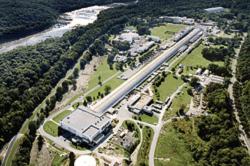
BBethesdaState: MDZip: 20817Country: USAWebsite: http://www.asme.org/about-asme/history/landmarks/topics-m-z/research-and-development/-197-david-taylor-model-basin-%281939%29Creator: Taylor, David
Innovations
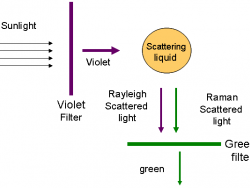
"I propose this evening to speak to you on a new kind of radiation or light emission from atoms and molecules." With these prophetic words, Professor C. V. Raman of Calcutta University began his lecture to the South Indian Science Association in Bangalore on March 16, 1928. Raman proceeded to…
Read MoreIn his search for a more economical way to make aluminum, Canadian inventor Thomas Leopold Willson accidentally discovered the first commercially viable process for making calcium carbide, which is used for production of acetylene gas, at a location in North Carolina. This chance discovery…
Read More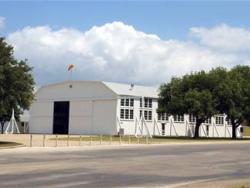
In its infancy, Hangar Nine housed Curtiss JN-4s ("Jennys") like the one Charles Lindbergh landed there when he reported for duty as a flying cadet in 1924.
As the U.S. was preparing to enter World War I, the Army raced to build an entire airfield, complete with 16 wooden hangars,…
Read More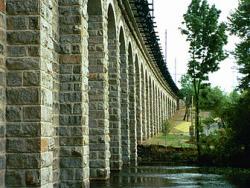
For more than 174 years, the Canton Viaduct has stood as a dominating structure on the New England landscape. When completed in 1835, the slightly curved, granite masonry bridge - 615 feet long, 70 feet high, and 22 feet wide - carried a single track of the Boston and Providence Railroad,…
Read More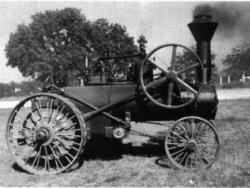
These engines, built by Cooper & Co., of Mount Vernon are among the oldest surviving agricultural steam engines to show the evolution from the portable, skid-mounted engine (ca. 1860) to the horse-drawn engine (1875), through the self-propelled but horse-guided engine (1875) and finally to…
Read More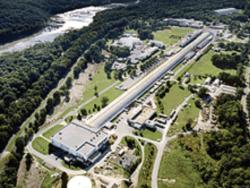
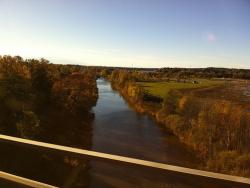
The Gota Canal is the biggest infrastructure project ever built in Sweden. The canal was dug by hand with shovels made of wood. It took over 22 years of 12-hour days - an estimated 12 million man-days of labor - to complete the project.
The Gota (pronounced yeu-ta) Canal is a 347-…
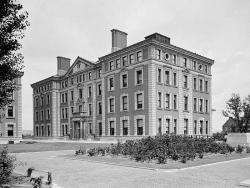
Havemeyer Hall was built between 1896 and 1898 under the leadership of Charles Frederick Chandler. It provided research and teaching facilities for faculty and students specializing in industrial, inorganic, organic, physical, and biological chemistry. Pioneering research done here led to the…
Read More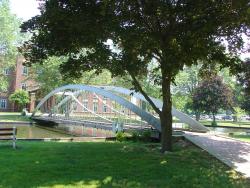
Designed, patented, and built by Thomas W.H. Moseley, this arched 96-foot span bridge preceded by years the standard use of wrought iron for bridges. For the first time in the United States, Moseley incorporated the use of riveted wrought-iron plates for the triangular-shaped top chord.
…
Read MoreThis is the oldest operating vessel with a diagonal, compound steam engine, with disc valve gear. Operating at a higher pressure than the oscillating-cylinder engines then used in lake steamers, this type of engine was more powerful and efficient, as well as smaller. The compound engine, built…
Read More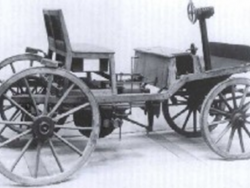
Siegfried Marcus (1833-1898), a remarkable engineer and manufacturer, lived most of his life and died in Vienna, leaving his most important legacy — an experimental automobile resembling today's modern car and the oldest extant automobile known worldwide. Marcus' second car, built circa 1875 (a…
Read More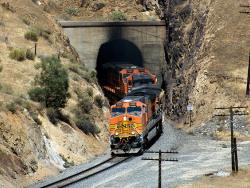
The Tehachapi Pass Railroad Line was cut through solid and decomposed granite by about 3,000 Chinese laborers using nothing more than picks, shovels, horse drawn carts, and blasting powder. This line, which rises from the San Joaquin Valley and through the Tehachapi Mountains, originally…
Read MoreThe first commercial circulating fluid bed reactor, PCLA #1 (Powdered Catalyst Louisiana), went on stream on May 25, 1942, in the Baton Rouge Refinery of the Standard Oil Company of New Jersey (now ExxonMobil Corporation). This first use of powdered catalysts in continuous operation allowed the…
Read More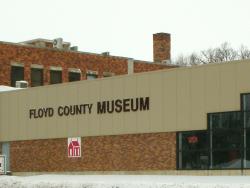
In 1892, John H. Froehlich, Froehlich, IA, Mounted A Gasoline Fueled Internal Combustion Engine On A Traction Geared Frame And Used It To Power A Threshing Machine. A Change In Power Source Had Begun On North American Farms. In 1892, The Case Co., Racine, Wi, Built An Experimental Gas…
Read MoreIn 1850, E. W. Quincy of Illinois patented an open-roll ear-snapping mechanism. A series of innovations led to corn heads for combines. Harvesting corn with corn pickers using open rolls on corn pickers after 1925 proved to be dangerous as farmers often needed to clear stalks from the…
Read More

